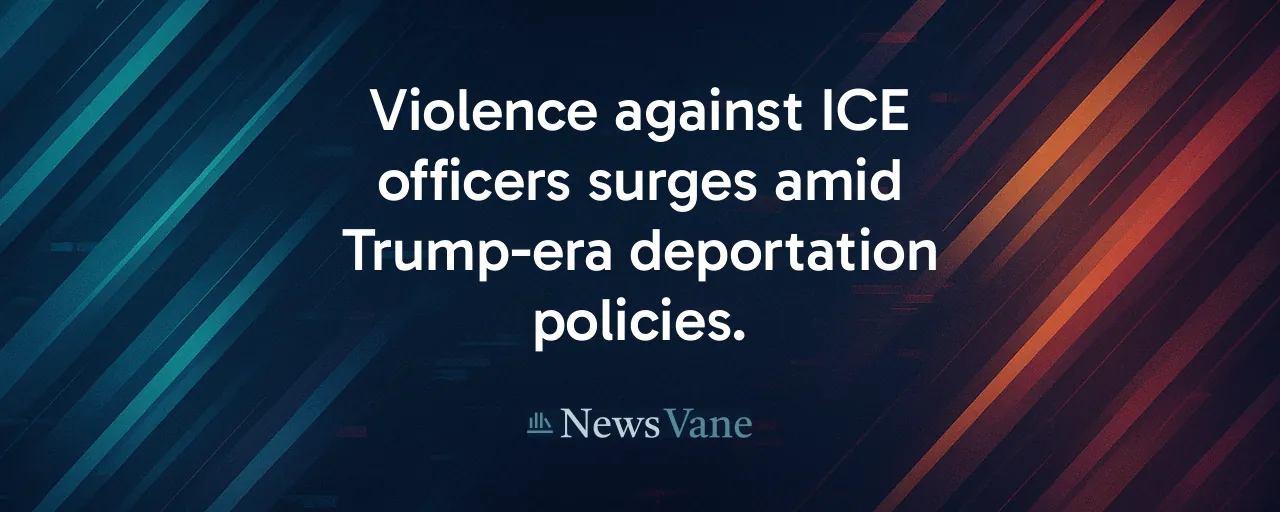A Sudden Spike in Violence
On July 4, 2025, chaos erupted at an ICE facility in Alvarado, Texas. A group of assailants, armed and organized, ambushed officers, shot one in the neck, and defaced vehicles with anti-ICE graffiti. That same night, in Portland, Oregon, rioters assaulted federal agents with punches and an incendiary device. Three days later, a gunman fired dozens of rounds at a Border Patrol facility in McAllen, Texas, injuring two police officers and a federal employee. These incidents, part of a reported 700 percent surge in assaults on Immigration and Customs Enforcement agents since January, have thrust officer safety and immigration enforcement into the national spotlight.
The attacks, detailed in a White House statement on July 9, signal a dangerous escalation in tensions surrounding ICE's role in carrying out the Trump administration's mass-deportation policies. While the administration points to specific political rhetoric as the cause, the issue is far more complex, intertwining questions of public safety, free speech, and the human toll of aggressive enforcement. As communities grapple with fear and division, a path to de-escalation remains elusive but urgently needed.
The Numbers Behind the Crisis
Data from the Department of Homeland Security paints a stark picture. Between January and June 2025, ICE logged 79 assaults on its personnel, up from just 10 in the same period of 2024. This sharp increase coincides with the Trump administration's push for expansive interior enforcement, including daily arrest quotas of 3,000 individuals. The Alvarado ambush, Portland clashes, and McAllen shooting stand out as the most severe incidents, with the Texas ambush alone leading to 10 defendants charged with attempted murder.
The raw numbers tell only part of the story. Scholars caution that without detailed public data on these incidents, assessing the true scope of the threat is challenging. What is clear, however, is that the perception of danger among agents is growing, as is public unease about the broader implications of escalating violence.
Tensions Fueled by Words and Actions
The White House has linked the violence to inflammatory statements from prominent Democratic officials, citing remarks like Rep. Hakeem Jeffries' call to 'fight in the streets' and Gov. Tim Walz's comparison of ICE to the Gestapo. These statements, the administration argues, embolden extremists and normalize attacks on federal officers. On the other side, advocates for immigrant rights contend that ICE's tactics, such as masked raids and National Guard deployments, provoke fear and resistance in communities already wary of federal overreach.
Studies on protest dynamics offer insight here. Academic research indicates that heavy-handed state responses can radicalize activists, while violent acts by protesters often trigger public backlash, strengthening support for law-and-order policies. Both fiery rhetoric and aggressive enforcement, then, risk fueling a cycle of escalation that benefits neither side. The challenge lies in breaking this cycle without sacrificing public safety or civil liberties.
A History of Controversy
ICE, formed in 2003 after the post-9/11 homeland security overhaul, has long been a lightning rod for debate. The 2018 'Abolish ICE' movement and 2020 racial-justice protests amplified calls for reform, while the Trump administration's second term has doubled down on enforcement, suspending prioritization guidelines and setting ambitious deportation goals. The use of masked ICE teams during June 2025 raids in Los Angeles sparked massive protests, culminating in the deployment of the National Guard.
The July 2025 attacks echo earlier incidents, such as the 2019 Tacoma detention-center firebombing, but their intensity marks a new chapter. As ICE's budget swells to a projected $18 billion for 2026, questions about resource allocation, oversight, and the agency's role in communities grow louder. Historical patterns suggest that unchecked escalation could deepen divisions, making compromise harder to achieve.
Balancing Safety and Transparency
One flashpoint in the debate is the anonymity of ICE agents. The administration defends masks and concealed identities as essential for protecting officers and their families from doxxing and retaliation. Immigrant advocates, however, argue that this opacity erodes accountability, especially during raids that often target non-criminals. A 2025 House poll found 54 percent of adults believe ICE has 'gone too far,' reflecting public discomfort with its methods.
Potential solutions exist. Encrypted badge numbers, scannable by civil rights monitors, could balance officer safety with public oversight. Mandating body-worn cameras and transparent arrest data might rebuild trust without compromising operations. These measures, while imperfect, could address concerns on both sides while reducing the risk of further violence.
Economic and Social Stakes
The costs of the current approach are steep. ICE's proposed $18 billion budget competes with other federal priorities, while local governments face rising expenses for policing protests and repairing damaged infrastructure. In immigrant communities, fear of raids discourages crime reporting and civic engagement, undermining public safety. Agents, meanwhile, report increased stress and PTSD risks, with potential impacts on recruitment and retention.
Legal questions add complexity. Pending Supreme Court cases challenge warrantless home entries, and debates over the Insurrection Act raise concerns about domestic military deployments. Solutions require navigating these constraints while addressing the human toll of enforcement on both agents and communities.
Paths to De-Escalation
Finding common ground requires bold steps. Bipartisan condemnation of violence, whether against officers or immigrants, could set a unifying tone. Refocusing ICE's mission on serious criminals, rather than blanket quotas, might reduce community tensions while maintaining public safety. Independent audits of assault data could clarify risks and guide policy, ensuring resources target genuine threats.
Community-liaison programs, allowing local officials to observe raids while preserving operational security, offer another avenue. These efforts, paired with congressional hearings to explore anti-doxxing laws, could foster accountability without inflaming divisions. The goal is clear: de-escalate without compromising safety or rights.
The violence against ICE agents is a wake-up call. It exposes deep fault lines in the immigration debate and presents an opportunity. By prioritizing transparency, targeted enforcement, and mutual respect, policymakers can chart a course that protects both officers and communities. The alternative, a continued spiral of conflict, serves no one.
